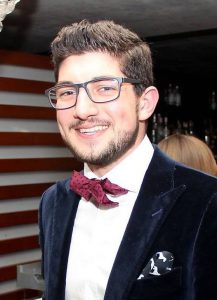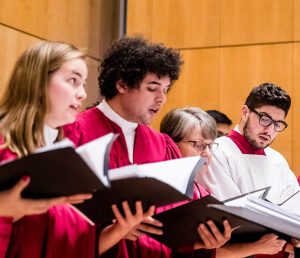MUSIC
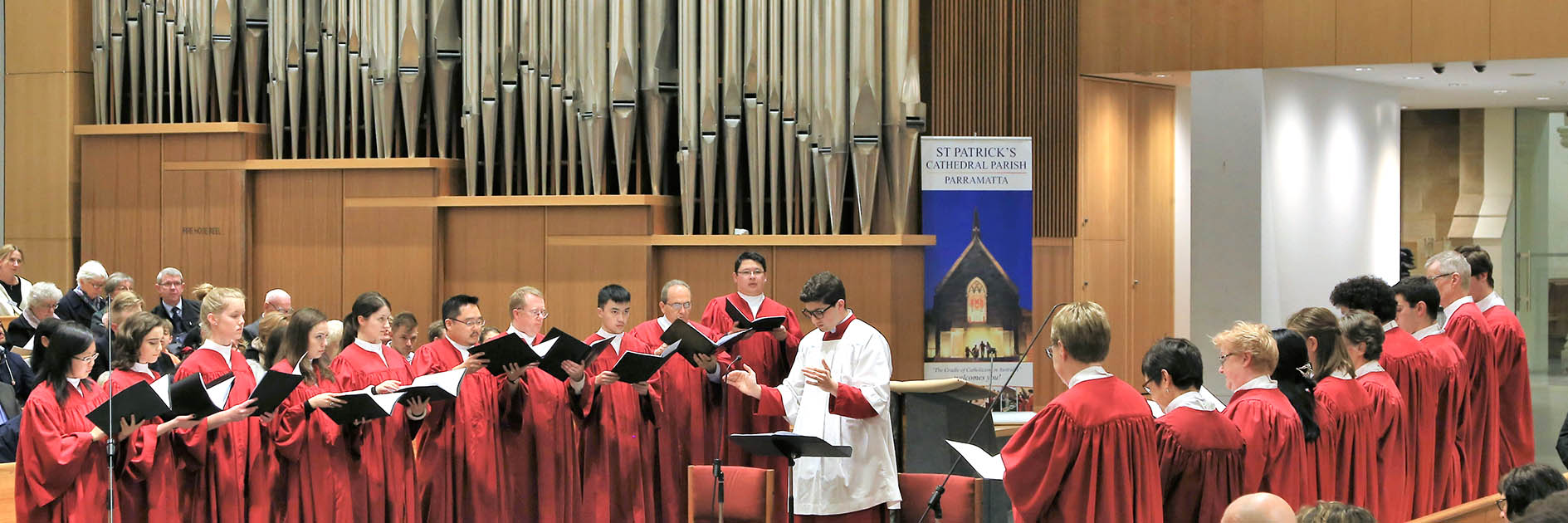
ABOUT MUSIC AT ST. PATRICK'S CATHEDRAL
Music in the life of St. Patrick's Cathedral began in 1839 in the early colony. From those early colonial days, Parramatta has flourished into a busy metropolitan centre in the western region of Sydney. The cathedral church too, has also expanded to serve the increasing numbers of people in our busy city, both physically in the new cathedral and in the schedule of liturgical services.
The music ministry of the cathedral continues to play an important role in serving the busier-than-ever round of diocesan and parish liturgies which take place throughout the year. Choirs (including St.Patrick's Parish choir, the cathedral schola, and the Tongan Choir) and cantors sing at 4 of the 5 Sunday Masses, as well as Weddings, funerals, and other occasions.
The program of liturgical music in the cathedral covers both traditional and contemporary works of the sacred music repertoire. In carrying out the desire of the liturgical documents on sacred music in the liturgy, priority is given to singing the liturgy itself. The Ordinary of the Mass, responsorial psalm and Gospel Acclamation are sung at all Sunday Masses and on solemnities and feasts by the assembly and/or choir or schola. At Solemn Masses (11.00am Sunday & solemnities), importance is placed on singing of the ministerial chants as well. The chants of the priests and deacons, are answered by the sung responses of the people. In general an entrance hymn and communion hymn are sung for the processions. On solemnities, a chant introit may also be sung after the entrance hymn, during the incensation of the altar. The Preparation of Gifts is usually accompanied by a choir motet or organ music. At the conclusion of each liturgy, an organ postlude accompanies the departure of the ministers and people.
The cathedral is blessed to have a committed team of talented musicians who serve its liturgical life. And the magnificent 1898 Norman & Beard which graces the new cathedral can not go unmentioned, as the principal instrument accompanying the cathedral liturgies.
I hope you enjoy perusing this site containing details of the musical life of St. Patrick's Cathedral.
HISTORY OF MUSIC
Music has been a noteworthy part of the religious life of Catholic Parramatta from the very beginning of its recorded history.
From 1820, a Church school operated in Parramatta under the auspices of Fr. J J Therry and he was a frequent visitor to the district. He was also the author of a volume of hymns for school children (published Hobart, 1846). It is not inconceivable that the children at the Parramatta school used some of his early compositions.
On 29th May 1837 an article appeared in the 'Sydney Monitor' that described the ceremony of consecration of the first church in the Colony dedicated to St Patrick that occurred at Parramatta the previous day. Miss E Wallace sang two solos, Ave Verum and Ah Perdona, while other members of the Wallace family 'rendered their able assistance'. Thanks to this article we have the first documented account of service music used in St. Patrick's.
In 1838, with the arrival of the Sisters of Charity, who came to assist the women of the Female Factory, in Parramatta, church music takes antler step forward. In the Nuns'' archives at St Vincent's Potts Point are two manuscripts thus inscribed;
'This manuscript was brought to Australia in 1838 by the first sisters of Charity and was used constantly by Rev Mother M Joseph O'Brien who was the organist.'
Mother O'Brien figures in the next note concerning music that appears in the press. Her own reception of the white veil in May 1840 was well reported in the 'Australian Chronicle.' The hymns used were:
O Mitte Spiritum Tulum, Veni Creator Spiritus, Regina Coeli, Tantum Ergo, O Salutaris
The account further tells us that 'These pieces were sung with considerable taste by the pupils of the convent and of Mrs Davis' excellent seminary at Windsor, of whom the Parramatta choir is principally composed.'
At this time, another document was written describing aspects of the infant parish including at Mass. Some political prisoners from French Canada were confined in the Longbottom Stockade at Canada Bay. On numerous occasions during their imprisonment 1840-1844 they walked to St Patrick's Church to attend Sunday Mass.
Diary item dated 21st June 1840 stated:
'In the Church at Parramatta there is a beautiful painting behind the altar - it's of the birth of Our Lord Jesus Christ. It is about 25 square feet. In addition there are eight other pictures which are of the suffering of Our Lord Jesus Christ. They are on both sides of the Church. They may be 8 by10 feet, perhaps bigger. There is also a fine organ in the loft, which plays during the mass accompanied by several fine singers. The masses are not long. Only low mass is said here'.
Sunday 13 Junes 1841: 20 of us went to mass today….It's 8 miles from here to Parramatta, which makes it 16 miles for us, coming and going. It's long enough so that we take a proper rest. Mon 12 July 1841: The pews in the Parramatta church rent for 10/- a place per year. Mr Platt had Mr Guertin and Marceau and Turcot sing while he sprinkled the holy water. Everyone in the church was surprised to see prisoners singing the church and it was the first time this ceremony was held in the church. There is an organ and fine lady singers in the Parramatta Church.
Sunday, 25th July 1841: 22 of us went to mass today and Mr Platt had a high mass sung by Mr Guertin, Turcot and Guerin. It's the first time a high mass has been sung in Parramatta, which the priest mentioned in his sermon, saying that we owed this ceremony to foreigners and to reward us the priest had the daily collection given to us with a small donation from the Sisters and we thing the priest contributed a bit, although he told us that the surplus of the collection came from the congregation. Still it amounted 25s 3d. for all of us.
[Land of a Thousand Sorrows. The Australian Prison Journal, 1840-1842, of the Exiled Candien Patriote, Francoius Maurice Lepailleur]
Throughout the 1850's, 60's and 70s there were sufficient references in the Catholic Press to confidently conclude that the singing of hymns was greatly encouraged and actively fostered in the parish schools and institutions, particularly hymns in English. Bishop Polding was keen for people to use such music at their worship and supported a William Dolman in his publication of a suitable collection of such hymns in 1857.
Following the establishment in Parramatta of the Sisters of Mercy from Callan in 1888, a new dimension was added to parish church music - orchestral ensembles. The sisters rapidly established their foundation as a considerable musical centre. The standard of choral singing rose markedly at this time and on special liturgical celebrations an orchestra, most likely of strings with possibly some brass, was used. Multi-talented musical families appear from this generation; the Watters, the Dellow, the Stevens, the Finns, to name a few. It was during this period that the first pipe organ was installed (1892) coming originally from St. Benedict's Broadway. From now on into the 1950's the Missa Cantata, of a full High Mass, was a regular feature of the liturgy in St Patrick's. The repertoire remained fairly constant and typical of the period, modelling that of St Mary's cathedral. This repertoire is summarised in the appendix.
By the 1950's the wind of reform in the Church was blowing steadily. The extravagant and choir centred massed of the classical and romantic periods were no longer welcome in the official repertoire. Gregorian chant was considered more appropriate and more authentic', particularly in regard to the reformed ceremonies of Holy Week. The choir seems to have fallen away at this time and the church once again had to rely on the school, the Marist Brothers themselves or groups such as seminarians, to provide the lead in solemn ceremonies. Traditional hymns persisted for congregational worship at Mass and Benediction.
As with most parishes, the change to a vernacular liturgy shattered musical life briefly. By the early 1970's Sister Anna Conway, ably assisted and encouraged by the indomitable sister Aidan Codd, who had maintained a great choral tradition both in the convent and the school of OLMC over a long period, had gathered a group of parishioners to lead the congregation of the 9.30am Sunday Mass in learning the new versions of the common, singing the responses to the Psalm and introducing the new musical forms for English liturgy. As in the 1800's, students of OLMC, now directed by Sister Christina brought distinction and solemnity to important ceremonies by their string ensembles. Once again a family of extraordinary talent has been a mainstay of this renaissance in Parramatta's Church music - the McFadden family of Fennell Street. Other families have been prominent as well - the Newport, the Boyle and the Curran families.
Good music always attracts more musicians. So it is that St Patrick's can assemble ensembles of considerable size, variety and high standard - comprised of musicians, Catholic and Non-Catholic dedicated to the enterprise of raising and maintaining standards in church music.
The recruitment of choirs has always been a task of varying success. The choir has its 'ups and downs'. In late 1980, Father Larkey, the Parish Priest, proposed that a body of choristers be recruited from the Marist Junior School to sing at the 9.30am mass each Sunday and on solemn feasts and retained on a permanent basis under scholarships provided by the parish. The choir replaced the 'special occasion' group which has persisted throughout the 70's, often recruiting singers from outside bodies such as musical societies and State schools. Since June 1981, first under the direction of Jeff Loche and latterly Robert Beazley, this choir, supplemented by older interested men and women, has provided a Choral Eucharist each week and appropriate services on solemn feasts.
At the same time a permanent choir was being re-constituted, a new pipe organ installed, the previous instrument of 1892* had fallen into disrepair and been vandalised during the 1950's. (John Boyle, now Father John Boyle and once Dean of the cathedral admits to have been a party to this).
The new pipe organ had previously been used by the Masonic Lodge in their Temple in the city. Whereas previously the organ had been located in a transept niche of the gallery, the new instrument was positioned in the middle , facing up the nave of the church. This has greatly enhanced the quality of the instrument's sound and those who recalled the older instrument have commented that the newer organ sounds 'bigger'. Bother instruments compared fairly equally in size. St. Patrick's now has five competent organists providing service music at the various weekly liturgies, with another undertaking appropriate studies at the Conservatorium of Music. These church musicians follow in a long tradition of organists at this cradle shrine of Australian Catholicism. Robert Beazley 1986
*What remained of this instrument was sold - to whom, for what price and even at what time, is not known. This left music in a very parlous state. Mrs Monica O'Keeffe, organist at the time, supplied the church with an instrument of her own - an harmonium played in the gallery. Mgr Kerr purchased a small electronic Hammond organ. This was kept in the old baptistery and had to be 'man-handled- through the doors each time it was required. Eventually it was moved to a musically/acoustically better position at the front of the church. Father Don Peisley recognised the limits of this instrument and permitted the purchase of a larger electric organ, the present Con 632.
There follows three lists of interest in the story of church music at St Patrick's The organists and choirmasters are in some appropriate order of time - it should be obvious how each list is dominated by one section of the community; female for the organists and definitely male for the directors of choir.
A repertoire list contains the titles of works which newspaper reports, the evidence of old music cabined and personal interview, corroborate as being used a mass during the last 150 years.

MUSIC PERSONNEL
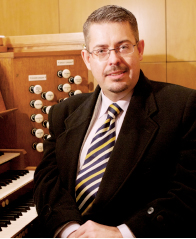
Director of Music & Principal Organist - Bernard Kirkpatrick B.Mus(Syd), B.Ec(Syd), A.mus.A
Bernard Kirkpatrick has been Director of Music at St. Patrick's Cathedral, Parramatta, since his appointment in 2006. His passion for sacred liturgical music began as a child in Tasmania in his local parish church, and further developed as a music student and Organ Scholar at the University of Sydney, studying with Sydney City Organist, Robert Ampt. In 1991 he pursued improvisation studies in Paris, with M. Naji Hakim (then Organist Titulaire de Basilique Sacre Coeur). and later participated in masterclasses with eminent organists, Peter Hurford, David Hill (Westminster Cathedral), and Dr. Christopher Dearnley (formerly St.Paul's Cathedral, London).
To date, he brings 40 years of experience and expertise to the cathedral music ministry, acquired over many years of service in cathedral churches (including Assistant Organist St. Mary's Cathedral Sydney, 1988-1999), and parishes (St. Francis of Assisi, Paddington, 1995-2006), seminaries, schools and universities, fulfilling roles of music director, choir trainer, organist, composer and cantor. In addition to his position at St. Patrick's Cathedral, he currently serves as Music Director at the Parramatta Seminary of the Holy Spirit, Seminary of the Good Shepherd in the Archdiocese of Sydney, and at Australia's only catholic liberal arts college, Campion College Australia.
Bernard is a Music Consultant to the Australian Catholic Bishops' Commission for Liturgy and was secretary of the National Liturgical Music Board for 10 years, during which time he was involved in the collation and publication of the new Catholic Worship Book II, published in 2016.
Amongst his opus of compositions, his "Mass of Christ the Redeemer" (published by OCP) is one of several Australian Mass settings approved and recommended for use in Australia with the new English translation of the Roman Missal. His compositional interests include developing ways of incorporating traditional sacred music styles e.g chant & choral polyphony with the contemporary needs of liturgical practice through a synthesis of form, musical language and instrumentation.
Some personal highlights of a lifetime of litugical music service include singing for and meeting Pope St. John Paul II at a Mass in the Private Papal Chapel (1991), and his role in the World Youth Day celebrations in Sydney 2008, when he directed a combined seminarian schola for the Papal Mass at St. Mary's Cathedral, Sydney, and was invited to play the organ at the closing Mass, both celebrated by Pope Benedict XVI.
Now, more than ever, Bernard enjoys sharing his knowledge and experience with others, especially by encouraging younger generations of musicians and clergy to develop their musical talents in the service of the Liturgy where the "true purpose of sacred music, ….is the glory of God and the sanctification of the faithful." (Musicam Sacram 1967)
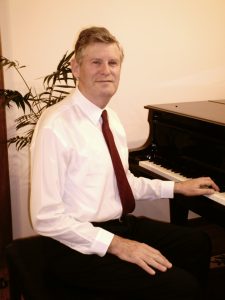
Assistant Organist - Michael Taylor
Michael Taylor's love of music began in early childhood and grew over many years as a hobby. He studied and became proficient in both piano and classical organ. After many years of amateur performing, he decided to leave his successful career in engineering to dedicate his life entirely to music and performing.
Both as amateur and later professional, Michael has always sought to bring quality to his Church-music playing. Disappointed at the standard of music and playing he so often encountered in the Catholic Church of the post-Vatican II era, and with often only meagre inadequate instruments at his disposal, he has wanted to help inspire excellence in Church music.
His lifetime of church playing has taken him through various parishes to his present roles of organist at the Our Lady of Mercy Shrine near Berrima, and assistant organist at St Patrick's Cathedral Parramatta. He frequently plays in churches far and wide for weddings, funerals, and other occasions.
Besides his involvement in Church music, Michael loves performing in public, and has performed in organ recitals at St Andrews Cathedral, Christ Church St. Lawrence and St James in Sydney, as well as at Sydney University and at the Shrine at Berrima. He is also a proficient pianist, and has given recitals, provided piano accompaniment for other performers, and provided entertainment at clubs and other similar venues. Michael has also been involved in teaching and lecturing in piano, and music theory and history. His accomplishments include a Bachelor of Music and A.Mus.A. and L.Mus.A. diplomas.
Tim Coorey began organ studies in secondary school, having learnt piano from an early age. He attended St Joseph's College, Hunters Hill, where he commenced organ studies with Malcolm Glynn on the restored and then newly installed Norman & Beard instrument in the school chapel. Whilst at St Joseph's, Tim was an active member in various ensembles, both as a violinist and pianist with focuses ranging from jazz and blues to classical orchestral music. His interests in choral music began as a student at Magdalen College School, Oxford, where he was involved in various choral ensembles focussing on classical and English sacred repertoire. This background has fostered Tim's particular interest in choral music of the English renaissance.
Having commenced as organ scholar at St Patrick's Cathedral in 2011, Tim plays regularly for Sunday services and assists with the choral directing and accompaniment for Solemn Mass and various solemnities throughout the liturgical year. He holds a Bachelor of Laws/Bachelor of Commerce at the University of New South Wales and practices as a solicitor in Sydney.
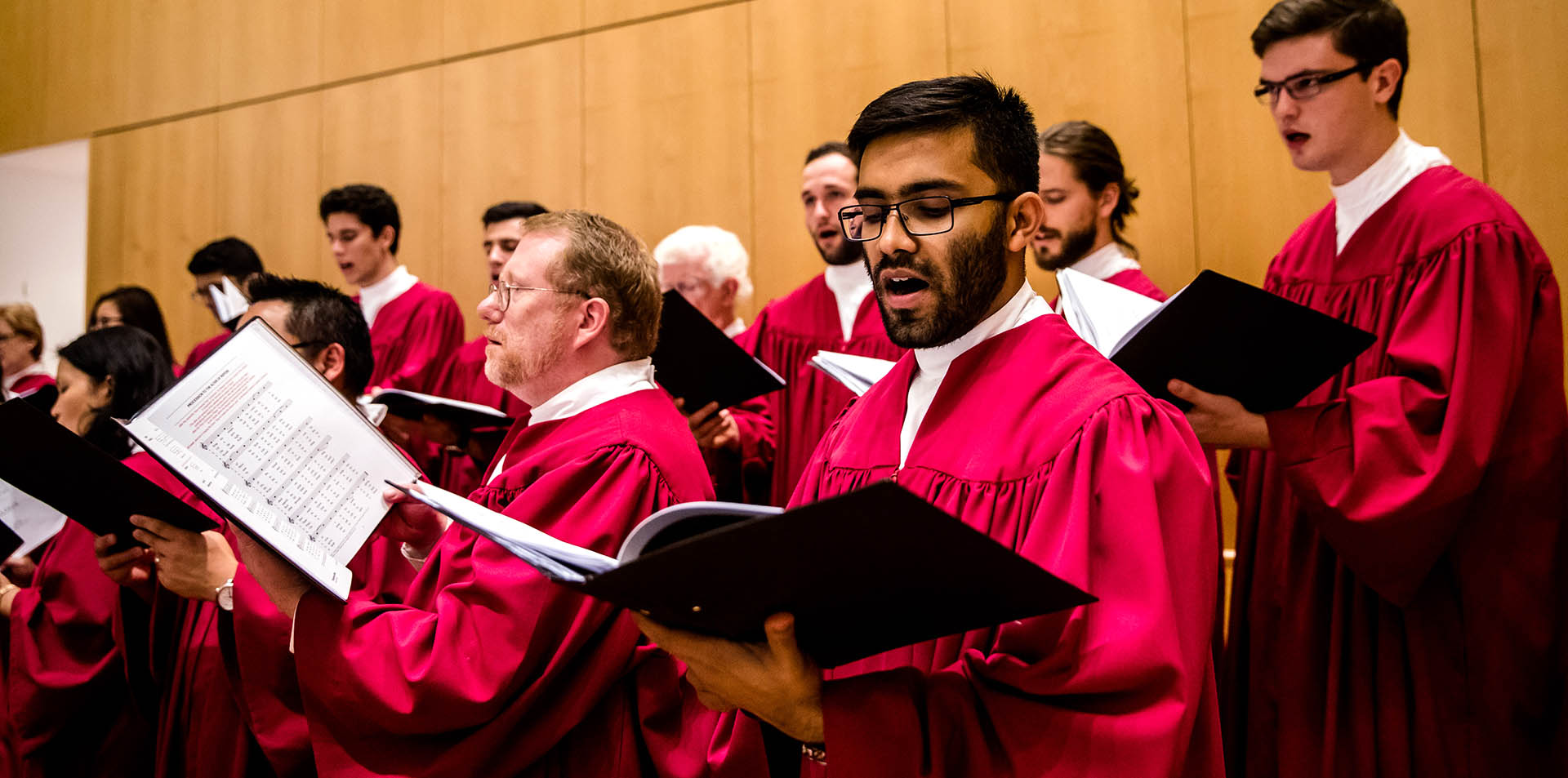
MUSIC POLICY
Introduction
Musical arrangements for Weddings liturgies to be held in the cathedral must conform to the requirements of this Wedding Music Policy. In most cases, music can be selected from the wedding music samples and then indicated on the Wedding Music Selection form and returned to the cathedral office. This policy is to ensure that musical arrangements for liturgies in the cathedral are in keeping with the dignity of the cathedral as the seat of the diocesan bishop, who is the
"chief steward of the mysteries of God in the particular Church entrusted to his care, is the moderator, promoter, and guardian of the whole of its liturgical life…....the solemn celebration of Masses … must be an example for the entire diocese. [GIRM 2007 The cathedral church 22]
The Cathedral Music Department will help make the liturgical celebration of your marriage a beautiful, prayerful, and joyful event. If you need assistance in planning your wedding music, our Director of Music will be pleased to assist you as far as possible in planning and providing musicians who will lead the singing and play instruments at your wedding.
He will be able to guide you in the selection of suitable liturgical music, as well as assist in the provision of one of the cathedral organists, cantors, choir or other musicians. Where it is desired that musicians from outside of the cathedral music ministry team be involved in the performance and leading of the liturgical music, certain norms of musical competence, suitability of instruments and choice of music and liturgical songs will be required, in accordance with the directives and principles outlined in the Catholic Church's liturgical documents on liturgy and music.
Music Selections
The selection of music must be appropriate to the sacramental nature of the liturgical celebration of marriage, and therefore must be dignified, and composed for religious, sacred or liturgical purposes. Secular pieces and songs are not appropriate and will not be permitted for use within the liturgy. In the case of vocal music and songs, texts must also conform with the Catholic faith, and should be drawn from Christian scripture, psalms or sacred poetry.
…Texts to be sung must always be in conformity with Catholic doctrine; indeed they should be drawn chiefly from Holy Scriptureand from liturgical sources. [SC ChVI 121]
Commercial "pop" music and "love songs" are not in keeping with these elements and will not be permitted in the service. We recommend that music in this genre should be played at your wedding reception.
Musicians
St. Patrick's Cathedral has a highly qualified team of professional church musicians who are able to help with choices and performance of suitable music for your wedding. The Director of Music will assist you in choosing the musicians you wish to have play at your wedding service.
Organist
At St. Patrick's, the organ is regarded as the principal accompaniment for Catholic Liturgies, including Wedding Services and Nuptial Masses.
The Cathedral Organist or his delegated assistant must therefore be engaged to play for all weddings. The cathedral organists are professional musicians who are familiar with the cathedral organs and who are trained in the art of liturgical music and service playing. This ensures that the music for your wedding will be of the highest quality and will be tailored to the liturgical ceremonial to ensure a seemless and unstilted experiene for your service.
Other keyboard instruments such as synthesizers, digital pianos, or accordians will not be permitted as substitutes for the cathedral organs.
To assist you in making selections for your wedding ceremony or nuptial mass, a sampler CD of suitable organ music for preludes, processions, and signing of the register is provided. Please use the accompanying liturgical music planning form to help make your selections.
Please note: If you wish to have a particular piece of music which is not in the repertoire list, the Director of Music will attempt to accommodate your request. In this case, the sheet music should be provided for the organist, or if the organist purchases the music to accommodate your request, the cost will be added to the organist fee.
If you choose to have a vocalist or cantor sing at your wedding, our Director of Music can secure the services of one of the cathedral cantors or singers who can lead congregational singing as well as provide vocal solos for parts of the service such as the signing of the register. In addition to choices made for hymns and/or signing of the register, the singer should also sing important parts of the Catholic liturgy, especially the Responsorial Psalm, Gospel Acclamation, and in the case of a Nuptial Mass, the Holy, Holy and Lamb of God.
Instrumentalists
Additional instrumentalists (trumpet & violin soloists, string quartets & ensembles etc.) are often desired as part of the wedding music. The Music Director can engage the services of professional instrumentalists who are superbly skilled and experienced in working in the Cathedral.
It is Cathedral policy that instrumentalists and ensembles, be arranged in conjunction with the Music Director. Please contact the Music Director for further details and arrangements.
Choir
The presence of a choir can be a very effective way of enhancing your wedding service with beautiful sacred music A quartet, octet, large choir or any other combination of Cathedral singers may be contracted for your wedding. Ethnic and Community choir groups may be permitted to sing for your wedding, in consultation with, and under supervision of the cathedral Music Director. To discuss the arrangements and fees for engaging a choir, please contact the Director of Music.
Non-Cathedral Musicians
The professional musicians in the cathedral music ministry team support the cathedral parish by providing their musical services as required for the diverse range of Sunday liturgies and feasts which are conducted at St. Patrick's. In return, the cathedral supports these musicians by way of engagement in weddings, funerals and special liturgies. Use of non-Cathedral musicians for weddings is therefore strongly discouraged. In the event, however, that you wish to employ a non-Cathedral musician at your wedding, the following information applies:
- An audio recording of the musician must be submitted to the Music Director at least 2 months prior to your wedding service. The Music Director will use the recording to determine the musician's ability to competently fulfill their musical role in the liturgy. This is done to ensure the quality of musical and liturgical prayer at your wedding. Most qualified musicians will have a suitable tape/CD available.
- In the case of qualified non-Cathedral singers, they will be permitted to sing one or two solos by agreement with the Music Director. Please note that even in cases where a non-Cathedral singer is permitted, the minimum liturgical parts of the service should be sung.
- Rehearsal time with the non-Cathedral musician and the Music Director must be arranged. Please note that this rehearsal will require an extra fee.
Fees
The fees for the payment of Cathedral musicians are payable to St. Patrick's Cathedral and should be paid to the cathedral office once the final music selections have been determined.
Cancellations
Cancellations of contracted musicians made with less than one month's notice of the wedding date, will incur a cancellation fee amounting to 50% of the fee payable for professional services.
Wedding Rehearsals
It is not usual for wedding musicians to attend the wedding service rehearsal. If, for particular reasons, an arrangement is made with the Director of Music for a cathedral musician to attend the wedding rehearsal an additional fee will be payable.
Pre-Recorded Music
All music in the cathedral liturgies must be performed by live musicians. The use of any form of pre-recorded music such as CDs and/or Cassette tapes etc. is not permitted before, during or after the cathedral liturgies.
Videography and Recording of Cathedral Music
If you intend to video or audio record the wedding service in the cathedral, you must notify the Director of Music. Except in the case of the cathedral organist and cantor, some restrictions may apply to the recording of particular musical elements.
Consultations with the Director of Music
If you need to arrange a consultation with the cathedral Music Director to discuss music selections or the engagement of musicians please telephone the cathedral music office on 8839 8433 or email to music@stpatscathedral.com.au
Before your meeting please be sure to give consideration to the ideas or requests which you may wish to discuss.
Before meeting with the Music Director it is preferable that you have already considered the readings for the service, psalm and gospel acclamation texts you would like. You should bring these details to the meeting.
_________________________________________________
In following this guide, to Music in St. Patrick's Cathedral, we are confident that the musical experience of your wedding will be a joyous and memorable one for you, the bride and groom and for your wedding guests.
With every best wish for your Wedding Day,
Bernard Kirkpatrick
Director of Music
_________________________________________________
Music Policy of St. Patrick's Cathedral, Parramatta. Applicable from 1 January, 2017
© 2017 St. Patrick's Cathedral Parramatta, Issued with approval of the Dean
THE ORGANS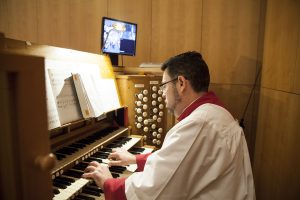
The cathedral is served by two organs. The main cathedral pipe organ was built by Norman & Beard in 1898, and formerly located in St. Saviour's Anglican Church, Walton, Place, London. The restoration and installation was undertaken in 2002 by Peter D.G. Jewkes Pty Ltd.
This large three manual instrument is noteworthy for the brilliance and cohesiveness of its choruses, which are immense-loud, rather than aggressive-loud, its superb reeds (including the splendid high-pressure Tromba and Swell reed chorus), and the kaleidoscope of tone colours available in the array of flutes and strings.
The Blessed Sacrament Chapel, (formerly the original church) contains a 2 manual Viscount purchased in 2006. The organ is on a platform which can be wheeled into any position in the chapel or cathedral.
ORGAN SCHOLARSHIP
Background
St.Patrick's Cathedral, Parramatta has established a scholarship to assist a young musician in developing skills required of an organist to serve the liturgical life of a busy cathedral church in the heart of western Sydney.
The cathedral serves as the parish church of Parramatta, and has a busy schedule of Sunday liturgies and Solemnities requiring music. The organ is used as the principal instrument for the 6.00pm Vigil Mass, 9.30am Solemn Mass (with Choir), 11.00am and 6.00pm. In addition, there are Weddings on most Saturdays of the year and occasional funerals.
As the church of the Bishop of Parramatta, the cathedral also serves the diocese as the centre for diocesan liturgies, and for services of diocesan agencies, schools and civic occasions.
The cathedral is a striking modern building, designed by Mitchell, Giurgola and Thorp, (architects of Parliament House, Canberra), and houses the magnificent English Cathedral style 3 manual 1898 Norman & Beard Pipe Organ (restored 2003 by Peter Jewkes Pty Ltd), within its lively acoustical space.
Organ Scholar Training
The tradition of Sacred Music in the service of the catholic liturgy is a long and venerable one. Music in the solemn liturgies of the church is integral. The role of the music ministers is therefore an important one, and requires particular and specific skills. Within a cathedral setting, the organ scholar has the opportunity of developing these skills, and applying them by participating in and accompanying designated and diverse cathedral liturgies.
The work of the liturgical music minister offers many rewards. Personal satisfaction in using one's musical talent in the service of God, the cathedral community and the city; the opportunity of working with other musicians, both amateur and professional; and the opportunity of improving one's own musicianship and skills to a professional standard.
In offering the scholarship it is envisaged to develop the following:
- Training of Organist's musical skills
- Development of organist's liturgical knowledge
- Praxis of Liturgical Music skills -i.e. accompanying the ceremonial of the Roman rite.
- Music administratiion and organisational skills
Duties of the Organ Scholar
- To assist the Director of Music and assistant organists in planning, sourcing, performing music for the catholic liturgy, including accompanying the assembly's singing of acclamations, hymns and songs at Mass, and in accompanying the cathedral cantors, choirs and other musicians.
- To perform solo organ repertoire such as preludes, reflection music, ceremonial improvisation and postludes as required.
- To take an active role in other cathedral music activities, such as singing in the various choirs, or cantoring duties as may occasionally arise.
- To liaise with the Cathedral Dean, pastoral associate, parish musicians or appointed delegate of the Dean, in determining music program and commitments within the cathedral.
The Scholarship
- Scholarship to be paid in quarterly installments.
- A portion of the scholarship to be paid towards organ tuition and other associated training, e.g. liturgy workshops, tutorial sessions etc. The balance will be paid in cash.
- The organ scholar will have unrestricted access to the cathedral organs for practice and tuition, subject to the availability of the cathedral.
- The scholar must demonstrate satisfactory development and progress in his training.
- The appointment will be for a trial period of 3 months with renewal on demonstration of satisfactory progress.
- The Scholarship will be awarded by a panel consisting of the following persons:
- The Dean,
- The Director of Music,
- A member of Pastoral Council & or/ teacher.
Criteria for Applicants
- The applicant must be a student in Year 10, 11 or 12 or a tertiary place of education.
- It is preferable that the student be Catholic (preferably Latin Rite but members of other rites are welcome to apply e.g. Maronite), or from a Christian background.
- The candidate must have 5th grade or higher AMEB qualification (or equivalent) in piano or organ.
- The candidate must have a good background knowledge of music theory and music history.
- Previous experience with liturgical music, either at school, or parish is desirable, but not essential.
- The candidate must demonstrate commitment in pursuing keyboard studies and developing accompaniment and performance skills to a level appropriate for an organist in public worship.
- The candidate must demonstrate an interest in studying and developing skills in liturgy, and other areas of sacred music, especially in voice - ie cantor or choral music.
- The candidate must be available for the designated Sundays and Solemnities (tba) and all services of Holy Week and Easter.
- Applicants will be required to undertake a basic music audition consisting of aural, sightreading, & practical tests, as well as an interview with the scholarship panel.
Additional Requirements
- Referees - The names and contact details of two referees must be provided
- a priest, a religious brother or sister or lay Religious Studies teacher
- Music teacher
Remuneration and Entitlements
Based on an average of 3 Sundays per month (excluding January) - $60.00 per service (including attendance at Wednesday choir practice, and pre-service rehearsal). 30 Sundays per Annum + Holy Week services.
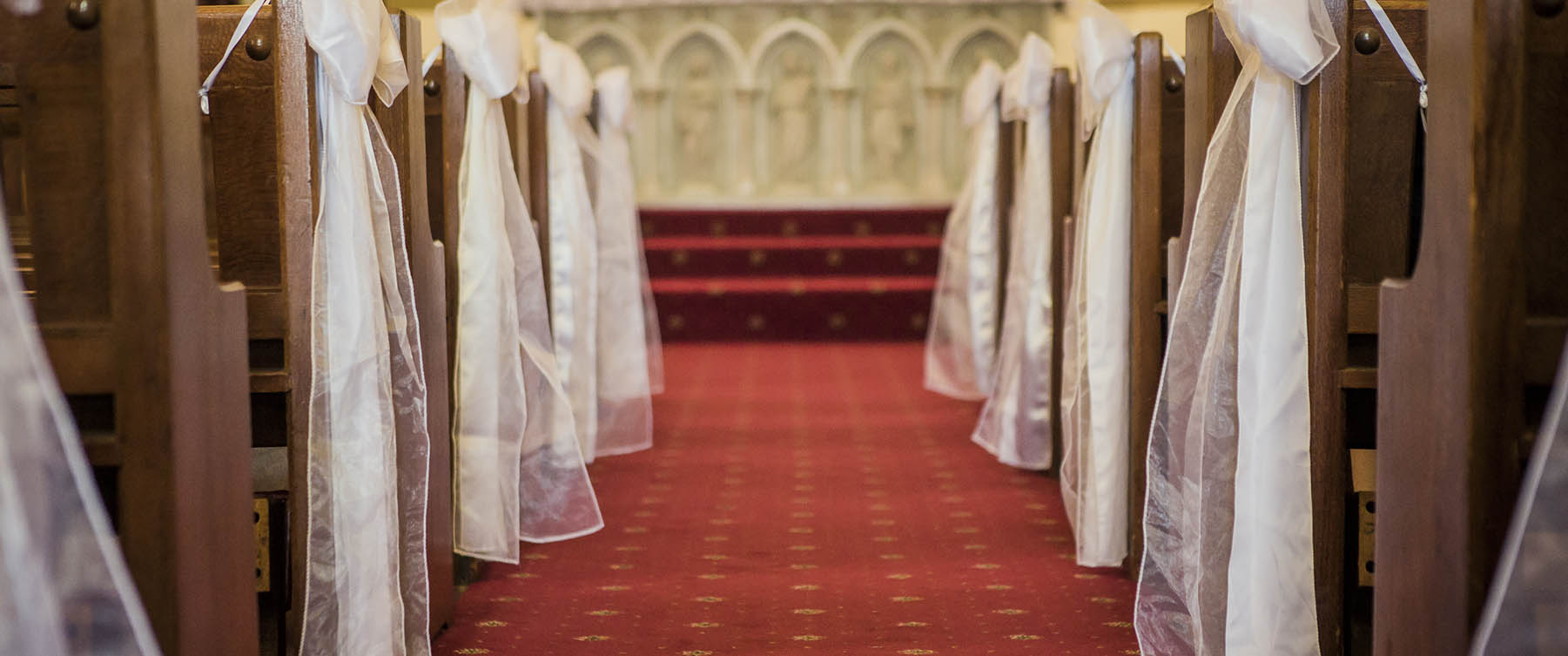
WEDDING MUSIC
Please read the Wedding Music policy of the cathedral carefully. It is important that you understand the requirements before engaging musicians or making music selections. The music policy is strictly applied and exceptions will not be permitted.
Available to download is the Wedding Music Selection Form.
Music samples can be previewed below.
Introduction
The Cathedral Music Department will help make the liturgical celebration of your marriage a beautiful, prayerful, and joyful event. Our Director of Music will be pleased to assist you as far as possible in planning and providing the musicians who will lead the singing and play instruments at your wedding.
Music Selections
The selection of music must be appropriate to the sacramental nature of the liturgical celebration of marriage. In the case of vocal music, the texts must also conform with the catholic faith, and should be drawn from christian scripture, psalms or sacred poetry. Commercial "Pop" music and "love songs" are not in keeping with these elements and will not be permitted in the service. We recommend that music in this genre should be played at your wedding reception.
Musicians
St. Patrick's Cathedral has a highly qualified team of professional church musicians who are able to help with choices and performance of suitable music for your wedding. The Director of Music will assist you in choosing the musicians you wish to have play at your wedding service.
Organist
The Cathedral Organist or his delegated assistant must be engaged to play for all weddings. The cathedral organists are professional musicians who are familiar with the cathedral organs and who are trained in the art of liturgical music and service playing. This ensures that the music for your wedding will be of the highest quality and will be tailored to the liturgical ceremonial of your service.
At St. Patrick's, the organ is considered the principal accompaniment for catholic wedding services and nuptial masses. Other keyboard instruments such as synthesizers or accordians will not be permitted as substitutes for the cathedral organs.
To assist you in making selections for your wedding ceremony or nuptial mass, a sampler CD of suitable organ music for preludes, processions, and signing of the register is provided. Please use the accompanying liturgical music planning form to help make your selections.
If you wish to have a particular piece of music which is not in the repertoire list, the Director of Music will attempt to accommodate your request. In this case, the sheet music should be provided for the organist, or if the organist purchases the music to accommodate your request, the cost will be added to the organist fee.
Vocalist/Cantors
If you choose to have a vocalist or cantor sing at your wedding, our Director of Music can secure the services of one of the cathedral cantors or singers who can lead congregational singing as well as provide vocal solos for parts of the service such as the signing of the register. In addition to choices made for hymns and/or signing of the register, the singer should also sing important parts of the catholic liturgy, especially the Responsorial Psalm, Gospel Acclamation, and in the case of a Nuptial Mass, the Holy, Holy.
Instrumentalists
Additional instrumentalists (trumpet & violin soloists, string quartets & ensembles etc.) are often desired as part of the wedding music. The Music Director can engage the services of professional instrumentalists who are superbly skilled and experienced in working in the Cathedral.
It is Cathedral policy that instrumentalists must be arranged through the Music Director.
Choir
The presence of a choir can be a very effective way of enhancing your wedding service with beautiful sacred music A quartet, octet, large choir or any other combination of Cathedral singers may be contracted for your wedding. To discuss the arrangements and fees for engaging a choir, please contact the Director of Music.
Non-Cathedral Musicians
The professional musicians in the cathedral music ministry team support the cathedral parish by providing their musical services as required for the diverse range of Sunday liturgies and feasts which are conducted at St. Patrick's. In return, the cathedral supports these musicians by way of engagement in weddings, funerals and special liturgies. Use of non-Cathedral musicians for weddings is therefore strongly discouraged. In the event, however, that you wish to employ a non-Cathedral musician at your wedding, the following information applies:
- An audio recording of the musician must be submitted to the Music Director at least 2 months prior to your wedding service. The Music Director will use the recording to determine the musician's ability to competently fulfill their musical role in the liturgy. This is done to ensure the quality of musical and liturgical prayer at your wedding. Most qualified musicians will have a suitable tape/CD available.
- In the case of qualified non-Cathedral singers, they will be permitted to sing one or two solos by agreement with the Music Director. Please note that even in cases where a non-Cathedral singer is permitted, the minimum liturgical parts of the service should be sung.
- Rehearsal time with the non-Cathedral musician and the Music Director must be arranged. Please note that this rehearsal will require an extra fee.
Fees
The fees for the payment of Cathedral musicians are payable to St. Patrick's Cathedral and should be paid to the cathedral office once the final music selections have been determined.
Cancellations
Cancellations of contracted musicians made with less than one month's notice of the wedding date, will incur a cancellation fee amounting to 50% of the fee payable for professional services.
Wedding Rehersals
It is not usual for wedding musicians to attend the wedding service rehearsal. If, for particular reasons, an arrangement is made with the Director of Music for a cathedral musician to attend the wedding rehearsal an additional fee will be payable.
Pre-Recorded Music
All music in the cathedral liturgies must be performed by live musicians. The use of pre-recorded music such as CDs and/or Cassette tapes is not permitted before, during or after the cathedral liturgies.
Videography and Recording of Cathedral Music
If you intend to video or audio record the wedding service in the cathedral, you must notify the Director of Music. Except in the case of the cathedral organist and cantor, some restrictions may apply to the recording of particular musical elements.
Consultations with the Director of Music
If you need to arrange a consultation with the cathedral Music Director to discuss music selections or the engagement of musicians please telephone the cathedral music office on 8839 8433 or email to music@stpatscathedral.com.au
Before your meeting please be sure to give consideration to the ideas or requests which you may wish to discuss.
Before meeting with the Music Director it is suggested that you should consider the readings for the service, psalm and gospel acclamation texts you would like. You should bring these details to the meeting.
In following this guide, to Music in St. Patrick's Cathedral, we are confident that the musical experience of your wedding will be a joyous and memorable one for you, the bride and groom and for your wedding guests.
With every best wish for your Wedding Day,
Bernard Kirkpatrick
Director of Music
Music Policy of St. Patrick's Cathedral, Parramatta. Applicable from 1st July 2006.
©2006 St. Patrick's Cathedral Parramatta.
Issued with approval of the Dean, Very Rev. Peter G. Williams. July 2006
